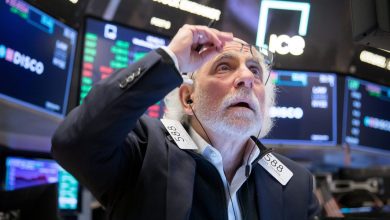Key Tailwinds Fade Leads to Years of Terrible Returns

Terrible Returns for Years As Key Tailwinds Fade
For many investors, the past few years have been marked by lackluster returns and disappointment. After an extended period of booming markets and record-breaking returns, it seems that the key tailwinds driving those gains have finally faded away.
One of the main factors contributing to the lackluster performance is the gradual tightening of monetary policy by central banks around the world. For years, central banks, led by the US Federal Reserve, have adopted an accommodative stance, keeping interest rates at historically low levels. This created a favorable environment for borrowing, stimulating economic growth and driving up stock prices. However, as the global economy started to show signs of recovery, central banks cautiously began to raise interest rates and unwind their balance sheets. This tightening of monetary policy has put pressure on financial markets and contributed to the recent downturn in returns.
Another key tailwind that has faded is the massive corporate tax cuts implemented by the Trump administration in the United States. These tax cuts were expected to provide a significant boost to corporate profitability and, consequently, stock prices. However, the benefits of these cuts have not materialized as expected. Many companies have used their tax windfall to engage in share buybacks rather than investing in productive assets or boosting wages. This has led to a perception of short-term gains at the expense of long-term growth, disappointing investors who had hoped for sustained returns.
Furthermore, geopolitical uncertainty and ongoing trade tensions have also contributed to the lackluster returns. The prolonged trade dispute between the US and China, along with the United Kingdom’s prolonged Brexit negotiations, have created an atmosphere of uncertainty that weighs on investor sentiment. This uncertainty has made it difficult for investors to accurately gauge the future prospects of companies, inhibiting their willingness to take risks.
Additionally, the rise of passive investing and the popularity of exchange-traded funds (ETFs) have also played a role in the disappointing returns. These investment vehicles, which seek to replicate the performance of a particular market index, have gained immense popularity in recent years. However, their popularity has led to a crowded trade, with many investors pouring money into the same assets. This has resulted in increased correlation among asset classes and reduced opportunities for outperformance.
The combination of these factors has created a challenging investment landscape for individuals and institutions alike. Many investors have become frustrated with their lack of returns and are reevaluating their investment strategies. The focus is now shifting towards active management, where fund managers actively select securities with the goal of outperforming the market rather than simply mirroring it.
As key tailwinds fade and the investment climate becomes increasingly uncertain, it becomes ever more crucial for investors to remain vigilant and adaptable. Diversification across asset classes and regions, along with a focus on long-term fundamentals, can help mitigate the impact of market volatility and improve the odds of achieving positive returns. Ultimately, it is important to remember that investing is a long-term endeavor, and periods of poor performance should not deter individuals from staying the course.




